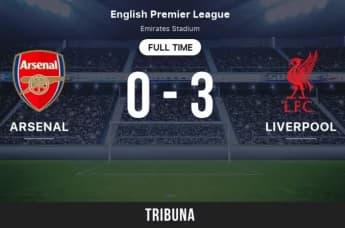Discover exciting niche betting markets in horse racing that challenge conventional wagering methods. Learn effective strategies and enhance your chances of winning with unique bets.
When people think about betting on horse racing, they usually picture classic bets such as win, place, and show, which are simple wagers based on a horse finishing in the first, second, or third position. However, the realm of horse racing betting goes well beyond these traditional options. There are numerous unusual, niche, and exotic betting types that can bring additional excitement and complexity to the sport.
In this article, we will examine some of the most unusual betting markets in horse racing, how these markets function, what makes them appealing to bettors, and strategies to enhance your likelihood of success. Additionally, we will discuss the odds, possible risks, and rewards associated with exploring bets beyond the conventional ones.
Betting on the Last Place (The Wooden Spoon Bet)
One of the more unique markets is betting on which horse will come in last. While most bettors concentrate on selecting winners, this market tests your ability to identify the least capable competitor in the race.
This wager can be challenging because a horse may intentionally be pulled up, unseat its jockey, or fall, thus disqualifying it from last-place betting. Furthermore, some horses might perform surprisingly well, disrupting predictions.
To achieve success in this market, it is important to analyze historical performances, pay attention to horses that exhibit poor endurance in long races, and take into account those who are returning from injuries or have shown difficulties on particular track surfaces.
Wagering on Jockeys Rather than Horses
Another interesting betting market focuses on wagering on individual jockeys instead of horses. Some bookmakers offer bets on which jockey will secure the most victories during a specific event or whether a certain jockey will win any race at all.
This type of wager shifts the emphasis from the horses to the abilities of the jockey. A skilled rider on a less favored horse could provide good value, while a top jockey on a favored horse may yield lower odds but has a greater probability of winning.
An important strategy is to analyze the performance of the jockey in addition to that of the horse. Some jockeys excel at particular tracks or in certain types of races.
Head-to-Head Bets on Horses
In a match bet, you're not wagering on the overall outcome of the race, but rather on which of the two selected horses will finish ahead of the other. It doesn't matter if they finish first or fifteenth— as long as your chosen horse finishes before the other horse in the match bet, you are the winner.
This market is favored because it makes betting easier. Bettors can concentrate on just two horses instead of having to analyze the entire field.
In order to achieve success, it is important to analyze head-to-head performances, the condition of the track, and how horses perform against similar competitors. While some horses may find it challenging to compete in a strong field, they might still possess the capability to outperform a weaker opponent.
Wagering on Horses to Fall or Throw Off Their Jockey
Certain bookmakers provide betting options on whether a particular horse will fall, refuse to start, or throw off its jockey. This is especially prevalent in jump racing, where the presence of obstacles increases the likelihood of falls.
This market carries a high level of risk due to its unpredictability. Nevertheless, assessing a horse's jumping skills, experience with hurdles, and historical records of refusals or falls can enhance your chances of success.
Rather than placing bets on which horse will win, some betting markets provide the option for gamblers to bet on the winning distance. Will the margin of victory be by a nose, half a length, or more than five lengths?
This wager often features appealing odds, as accurately predicting exact distances can be difficult. It is particularly beneficial when a strong favorite is anticipated to lead, as they might win by a significant margin. In contrast, closely contested races frequently result in photo finishes, which could lead to successful short-margin bets.
Wagering on the Starting Price (SP) Interval
Instead of choosing a horse to win the race, certain markets provide the option to bet on whether the starting price (SP) of the winning horse will fall within a particular range. For instance, you could place a bet on whether the winning horse's SP will be less than 3/1, between 4/1 and 10/1, or more than 12/1.
This market is perfect for bettors who focus on analyzing betting trends instead of horse performance. When a strong favorite wins, the starting price (SP) tends to be low, whereas if an underdog wins, the SP range will likely be more extensive.
Wagering on a Horse to be in the Lead at a Specific Point
Some bookmakers provide betting options on which horse will be in the lead at specific points during the race, like the halfway point or the final furlong. This can be an exciting choice in races featuring front-runners who typically set an early pace but may lose momentum later on.
Betting enthusiasts frequently examine previous performances to identify which horses tend to start swiftly and take the lead early in the race. However, this type of wager can be precarious, as strategies can frequently shift during the event.
The Pros and Cons of Unconventional Betting Markets
Although these unconventional markets present thrilling opportunities, they also come with certain risks. Unpredictability plays a significant role—betting on a horse to finish last can backfire if that horse is pulled up during the race instead of finishing. Likewise, match bets can be influenced by a competitor unexpectedly showing improved performance.
That being said, these markets can offer great value for those willing to conduct thorough research. While traditional bets on race winners often feature narrow odds, niche bets can sometimes yield better payouts due to their complexity.
Investigating different horse racing betting options can enhance the excitement and potential rewards of wagering. From placing bets on the last position, the performance of jockeys, head-to-head races, to creative prop bets, there are numerous ways to engage with the sport that go beyond the conventional win, place, and show betting.
Grasping the risks involved and implementing effective betting strategies—such as analyzing horse performance, examining jockey patterns, and considering race conditions—can enhance your likelihood of success. Although these betting markets may not always be the simplest to forecast, they undoubtedly introduce an additional element of excitement and difficulty to horse racing wagering.







